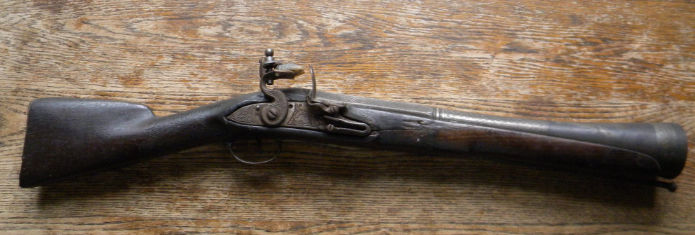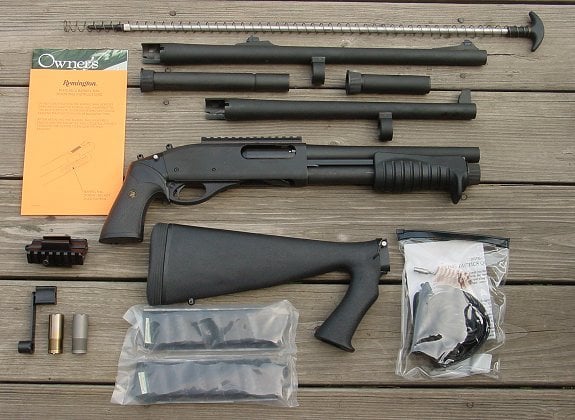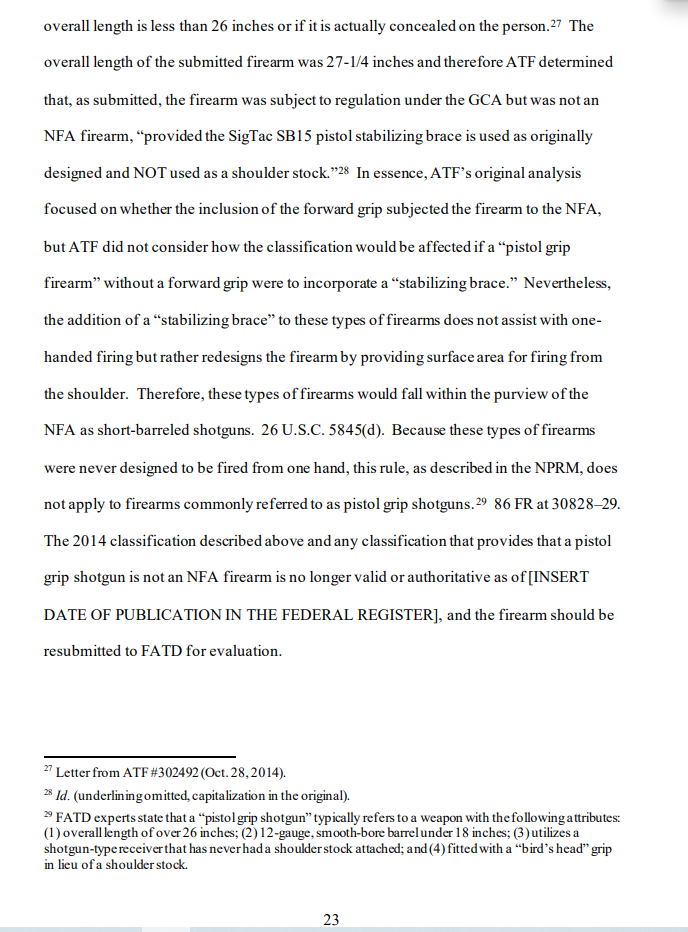The military use of shotguns has always fascinated me. I love shotguns, like an absolute ton.
I shoot clays with a shotgun, I hunt with a shotgun, and I trust a shotgun for home defense. As a Marine, I was even issued a Mossberg due to my skill and experience with these firearms.
The military use of shotguns has always fascinated me. I love shotguns, like an absolute ton.
I shoot clays with a shotgun, I hunt with a shotgun, and I trust a shotgun for home defense. As a Marine, I was even issued a Mossberg due to my skill and experience with these firearms.
The Very Beginning
Firearms that fire a load of shot have been around since the earliest guns, but the most notable dedicated shotgun came in the form of the blunderbuss.

A flintlock blunderbuss, circa approximately 1780. (Photo: Catawiki)
[…]
The American Revolution
The blunderbuss was never superbly popular with Americans.
Pilgrims being armed with the blunderbuss at Plymouth rock seems to be more fiction than fact. Coming into the American Revolution, the Americans were armed with more traditional muskets.
These smoothbore long arms were not known for their accuracy. Colonial American soldiers recognized this and began using a special load called “buck and ball.” Soldiers would pack a normal musket ball but would also add a small load of buckshot pellets.
These buckshot pellets, followed by the musket round, improved the chance of scoring a hit on enemy soldiers.
In the Battle Of New Orleans, the buck and ball proved its merit. 5,700 Americans faced 8,000 British and routed them. The Americans suffered 62 casualties, and the British suffered 2,034.
Into the Civil War
The American Civil War saw the rapid rise of small arms technology, including metallic cartridges. But at the beginning of the war, the famed buck and ball loads were still being heavily used.
The South, in particular, utilized shotguns extensively, especially with their cavalry forces.
Shotguns at the time were muzzleloading designs and often featured shorter barrels to make them lighter and easier to handle, especially on horseback.
The Confederates also lacked the production capacity of the North, and this forced them to utilize common hunting implements in war.
During the Civil War, metallic cartridges, including brass-cased shotgun shells and repeating rifles, came to be. Like every other firearm, the brass-cased shells improved reliability and reloading speed.
However, the closest shotguns got to being repeaters at the time were double-barrel guns, also known as coach guns. These shorter barrel shotguns were known for being quite powerful and effective for quick engagements.
In the 1870s, paper shells were introduced.
These water-resistant paper shells lowered the price of shotgun shells significantly and were easier to manufacture than brass shells. However, they could not be easily reloaded.
Next, the article goes into the adoption of repeating shotguns, then the World Wars, and later Vietnam and the Modern Era.







